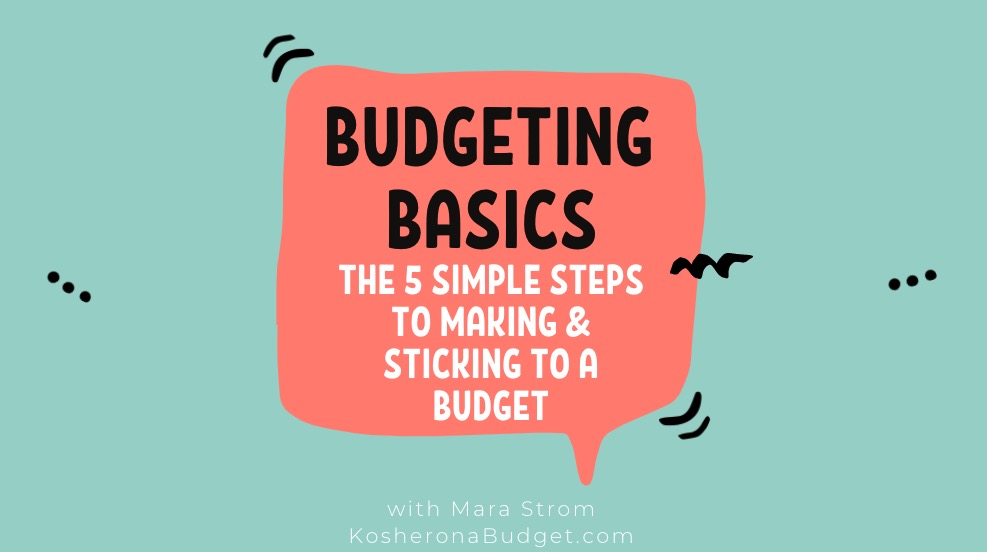 Once a month for the past four or five months, we have seen huge type-faced headlines about the “highest inflation rates in twenty years!”
Once a month for the past four or five months, we have seen huge type-faced headlines about the “highest inflation rates in twenty years!”
These headlines are legitimately frightening — and all the more so if your family was already struggling to cover your monthly expenses. According to data compiled and presented by the Washington Post, between 40 percent and 78 percent of Americans are living paycheck to paycheck. So when the Consumer Price Index goes up by 7%, that already stretched income is going to snap — or at least feel like it will.
While the statistics seem to speak for themselves, all is not hopeless. If you’re wondering if it’s possible to “inflation proof” your budget — and your income, I want to share with you some specific steps you can take today to weather this financial storm.
Before I start detailing them, however, I want to be clear: There is no magic pill. Some families will struggle more than others, and the tighter your income, the more you are likely to feel the pressure. That’s true when it comes to inflation, but also medical bills, loss of job, reduction in income due to Covid, or any of a number of other challenges. I don’t want to minimize these realities. I do want to give you hope that you still have (at least some) control over your financial destiny. Even when really difficult things are happening.
Tip #1: Take News Headlines With a Grain of Salt
Scary-sounding statistics are undoubtedly good for selling more papers, but they aren’t always good for predicting your personal narrative. Bolded headlines about the swelling cost of groceries, for example, can definitely leave even the most level-headed shopper wondering if he or she will ever be able to afford fresh produce again. And meat?? We can forget about that, right?
Actually, probably, wrong.
Yes, many prices have increased but certainly not on every item — and the average increase is closer to 5-7%, not the 10%, 20% or even 50% I’m seeing reported online. Not to mention that salaries have also gone up — an average of 2.7% in 2021, which means in real dollars, we are seeing an actual rate of inflation of about 2.5% – 4%.
But whatever the amount of increase, the same strategies that I have been teaching you for the last 15 years on Kosher On A Budget definitely still apply now. Let’s review some of them….
Tip #2: Avoid Food Waste At All Costs
Here’s another statistic for your back pocket: Americans waste — i.e. throw away — about 40% of the food they purchase, at grocery stores and from restaurants. If we can cut this waste in half, we’ll eliminate the impact of most — if not all — of the current inflation.
Just what is food waste? You know those radishes that turn mushy in the back of your produce drawer? Or the Shabbos leftover that you end up tossing out on Thursday night? That’s food waste.
And while I can’t guarantee that you’ll never throw a rotten tomato out again, I can tell you that the single best way to reduce food loss is to make a menu plan. Long-time KOAB readers have heard me sing the praises of menu planning for as long as I have been writing this blog.
When you have a plan and shop according to that plan, you are exponentially less likely to end up tossing out food. I’ve written a ton of articles about menu planning – can you can find them all here. Importantly, remember to plan a day each week for a leftover buffet.
And by the way, when you simply don’t have the brainpower to make yet another plan, you can do what we have been doing for the last several weeks: make one plan and repeat it every single week. Every Sunday is the same thing as the Sunday before, and the same goes for Mondays, Tuesdays, Wednesdays and Thursdays. We make very basic foods for dinner and lunch to further simplify our crazy lives. When my family starts to complain about repetition, I know it’s time to make a new (repeating) menu plan.
#3. Read the Ads Before Your Shop
I’m going to offer another piece of advice specific to the grocery store, if you don’t mind, since that is the place that many families can quickly lose control over their variable monthly spending.
That tip is to peruse the weekly grocery store ad before you hit the store, either by getting the flyers/inserts out of your newspaper or by looking them up online. Here’s why: Even in the midst of rising food prices, grocery stores still feature weekly sales which will include “loss leaders”.
If you’re not familiar with the term, a loss leader is an item that a grocery store will put on sale for the week at such a low price that they will actually lose money by selling it to you. For example — a $1 box of cereal, or a $.50 bottle of ketchup, or bananas for $.19 a pound.
Obviously if a store marks down half its inventory as loss leaders, it will quickly go out of business. But a few strategic loss leaders each week helps guarantee that people will come into the store for those items — and then fill up their cart with a whole bunch of other items on which the store makes a healthy profit.
As an inflation-busting consumer, your job is to buy the loss leaders in bulk so you will have a “stock” of pennies-on-the-dollar items for when you need them later. This strategy is known as stockpiling. If you want, you can pair a coupon with the loss leader sale price, but honestly messing with coupons may not be worth your time if you’re already overtaxed.
Stocking up on the maximum allowable quantity of shelf-stable or freezer-stable loss leaders will allow you to reduce your grocery costs over time. Not sure how to get started? Try setting aside $10 a week and a little bit of space in your pantry for your stockpiling. And read this post for more tips.
By the way, if you have a local kosher grocery market in your area, the same strategy applies. And often there, the loss leaders will be on protein sources, including specific cuts of meat and/or chicken.
#4. Cut Your Costs on Meat & Chicken
Speaking of protein – let me also suggest some standard operating advice for reducing your kosher grocery budget since meat sources of protein tend to be one of the highest ticket items per pound:
- Eat less meat during the week, filling up instead on beans, chickpeas, lentils, tofu, eggs and other low(er) cost protein sources
- Eat less expensive cuts of meat — for example make chicken wings rather than boneless skinless chicken breasts, especially when they are a loss leader (if you have the freezer space, don’t be afraid to stock up!)
- Eat meat as an addition to your meal rather than the main focus of the meal — for example, make pasta with crumbled meat sauce rather than a meatloaf
#5. Get Intimately Familiar With Your Numbers
Here’s a tip that will help you at the grocery store — and anywhere else that you spend money: Track.your.spending.
If you don’t have a reliable system for tracking, now is a great time to put one in place. (Read more about tracking here.) The reason tracking is so valuable is because it gives you real-time accurate data about how much you’re spending — and what you’re spending it on. It’s very hard — I’d say downright impossible — to effectively reduce or “control” your spending if you don’t know how much money is going out each month.
And even if you can approximate your total spending, when you don’t know how much you’re spending on specific categories of expenses, you don’t really have useful data. Once you start gathering good, detailed data about your spending behavior, you will immediately be able to identify areas where you might be able to reduce expenses. Trust me: Inflationary forces or not, tracking your spending is the single best thing you can do to change your behavior with money.
#6 Prioritize, Prioritize, Prioritize
Every single time I teach a class about budgeting, I tell my students that learning this skill doesn’t require you to be good at math; it requires you to clarify your values.
A budget should reflect what is most important to you and how you plan to make room within your (finite) income for the seemingly infinite list of wants and needs that we all have. When inflation is up, the pressure on your income grows — which means we have to be even more clear about our priorities.
All too often, we don’t really take the time to think about what is really most important to us. For one family that might be tuition; for another family, in a different phase of life, that might be a travel, or maximizing retirement savings, or putting aside money for a new home.
Once you identify your top priorities, it becomes a lot easier to say “no thank you” to other less important items – especially during this inflationary period.
I talk in depth about how to engage in this values clarification process in my Budgeting for Beginners classes, which I offer two or three times per year on Zoom. My next class is going to be on January 30th at noon EST if you’re interested in joining me.
How have you been budgeting during this inflationary period? What tips do you have to share with the KOAB community?













Thank you for these useful, practical suggestions
You’ve very welcome, Lisa! I’m so glad it was helpful.